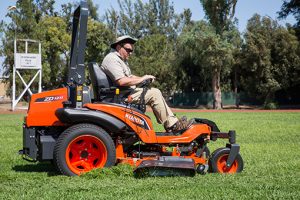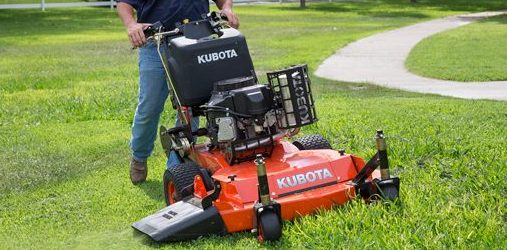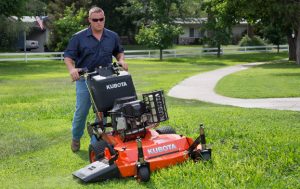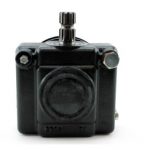 You didn’t think we finished all the possible questions concerning your lawn mower in Part One of A Q And A On Lawn Mowers. You could say that we just scratched the surface.
You didn’t think we finished all the possible questions concerning your lawn mower in Part One of A Q And A On Lawn Mowers. You could say that we just scratched the surface.
In Part Two we will discuss lawn mower problems from flooding the engine to how fast the blade of a lawn mower travels.
Q: What does flooding the engine of a lawn mower mean?
A: The definition is the same for flooding a car engine. It means that too much gas has been fed into the engine. The lawn mower engine works the same as a car’s engine. It needs a particular ratio of gas to air to create the explosion of the piston chamber that makes the engine work.
Q: The engine of my gasoline-powered lawn mower has flooded. What should I do?
A: Generally, a lawn mower featuring a fuel primer should only need to be engaged no more than three times to prime the carburetor. Any more than that will flood the engine. If the engine is flooded, there are a couple of alternatives to alleviate the situation. First, you can take out the spark plug and dry off the electrode, which is located on the threaded end. The flooding of the engine has caused the plug to be soaked with fuel. So it can’t ignite properly. Once the spark plug is dry, replace it and try starting the mower. Some advise that you squirt a little bit of starting fluid directly into the carburetor intake. Starter fluid is a higher octane and should cause the engine to ignite easier. The second option is to leave the mower alone for about 10 minutes so that the fuel can evaporate, then try starting it again without priming the carburetor. Pull the starting rope a few times. If the mower doesn’t start, then press the primer no more than three times. It should start if there are no problems with the carburetor. If the mower still doesn’t start, then the fuel could be too old or the mower needs to be serviced.
Q: What should I do when oil sprays out from the lawn mower?
A: Assuming that a 4-stroke engine powers the mower and the oil filter cap is on, the output end crank shaft seal may need to be re-placed.
Q: What does hydrostatic mean when describing a lawn mower engine?
A: It means that the mower features an automatic transmission.
Q: How do you repair a loose-mounted engine on a riding lawn mower?
A: Expose the engine of the mower and look for the four bolts on its bottom to determine if they are properly tightened or that all the bolts are present. If a bolt or two are missing, buy new ones and place them in the appropriate location. If the bolts are loose, tighten them.
Q: The blade on my lawn mower does not turn. What is the problem?
A: If your riding lawn mower features a belt-driven blade, then the belt could be jammed on the pulley because it is worn out, the belt is broken, or there is a problem with the pulley. Pulley problems are rare. So the issue is probably the belt or a cable or linkage that work the belt. Inspect the belt. If it looks okay, then engage the belt with the cable or linkage with the mower not running and determine if they move properly as the cable or linkage stretches the belt during engagement. If a push mower, then check the spline on the blade or crankshaft to see if it is stripped.
Q: How fast does the blade of a lawn mower travel?
A: Most lawn mower blades move at a speed of 10,000 to 18,000 RPMs.
Q: Why did the spark plug of my lawn mower turn black after just one mow?
A: The cause could be too much gas being burned in the cylinder, the air filter is clogged, the carburetor is out of adjustment or the choke is stuck.
Q: How do you determine that a spark plug is bad?
A: If the mower starts and runs, but it “misses” every once in awhile, then suspect the plug.
Q: My lawn mower has no power when I turn the key on.
A: This could indicate that the mower has a bad safety switch, solenoid, or battery.
Q: Why does my lawn mower cut lower on one side?
A: The tires on one side of the mower are not inflated properly or the deck isn’t properly level. The front tires should be inflated to 12-14 psi and the rear tires should be inflated to 8-10 psi.
*Always consult with your owners manual and a certified small engine repair specialist to assure you’re following the right procedures for the lawn mower you have.
Save
Save







